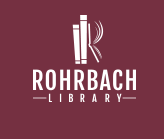Publication Date
9-8-2018
Abstract
Planetariums have been home to spatial visual music for over sixty years. Advanced technology in spatial sound such as sound field and wave field systems are superseding channel-based systems as areas for research. Nevertheless, there is room for invention in immersive spatial visual music in a channel-based planetarium. Circular seating minimizes problems with sonic reflections from circular walls suffered by unidirectional theatre seating arrangements. Circular seating supports dynamic permutation of channel-to-speaker routing as a corrective and compositional measure. Full dome projection of visuals gives inherent support for graphics-to-music spatial correlation and related immersive effects. This paper is a case study of the aural architecture of one small circular planetarium and the visual music composition and performance approaches that it supports.
Recommended Citation
Parson, Dale E. Ph.D., "A Circular Planetarium as a Spatial Visual Musical Instrument" (2018). Computer Science and Information Technology Faculty. 1.
https://research.library.kutztown.edu/cisfaculty/1


